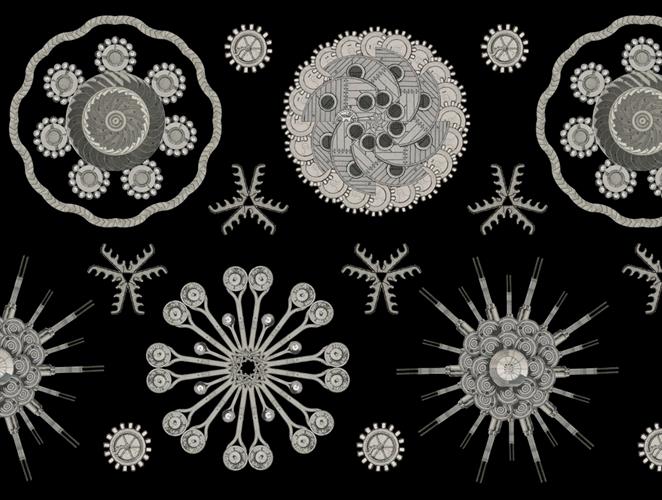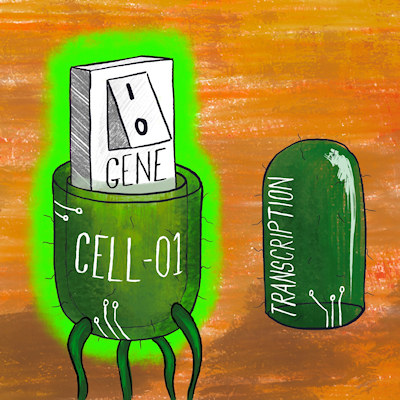June 9, 2021 -- A defining characteristic of biology is that life evolves. Traditional biological engineering views an engineered product as a final destination in the design process. However, the authors of a perspective piece published in Nature Communications on June 7 believe that a new perspective is needed for engineering of biological systems -- one that takes into consideration how a biosystem will continue to evolve over time.
"The thing that has always fascinated me about biology is that it changes, it is chaotic, it adapts, it evolves," explained Sim Castle, first author and a doctoral student in the school of biological sciences at the University of Bristol, in a statement. "Bioengineers therefore do not just design static artefacts - they design living populations that continue to mutate, grow and undergo natural selection."
Evolution makes engineering living systems complex because traditional engineering concepts do not apply to biology, the authors said. Evolution poses both a challenge and an opportunity for bioengineers. On the one hand, evolution can be an extremely effective problem solver and engineers have exploited this fact for decades. Alternatively, it can be a detrimental force that changes the function of engineered biosystems through genetic variation.
They urge that evolution should be a central component of an engineering theory of biology. As the field of biological engineering grows, it will become essential to build evolutionarily stable biosystems that can operate under unavoidable evolutionary forces.
Evotype
The authors introduced the concept of the "evotype," or the set of evolutionary dispositions of a biosystem. They suggested that evotype and evolutionary potential is analogous to genotype and genes or phenotypes and traits. One key difference is that a disposition is not a directly observable property, instead it is a potential property of the system.
In the article, the team proposed a framework to specify, test, and conceive the properties of biosystems in terms of their evolutionary potential and not just their phenotype.
In terms of engineered biosystems, evotype can be characterized in two ways. The first is that of evolutionary stability, where a system changes its function as little as possible as it evolves during use. The second is specific evolvability, where a system can easily evolve new phenotypes as it adapts to changes in the environment.
Designed evotypes can be achieved through engineering genetic variation, the production of function from a genotype, and both natural and artificial selection. Each of these factors offers a tuning knob for bioengineers to control the possible paths available to evolution.
Risks of evolution in biological engineering
The authors stated that bioengineers have a "moral obligation to develop a deeper understanding of how synthetic biosystems will continue to evolve if deployed into our bodies or the wider environment."
There have been efforts to develop tools that reduce or mitigate evolution through the use of fail-safes like kill switches or metabolic dependencies. However, the authors suggested that a stronger theoretical understanding of how synthetic biosystems might continue to evolve once deployed is needed to ensure that there are no unexpected faults or negative consequences associated with the technologies. As technologies capable of rapid genetic change become a reality, such as gene drives, this becomes even more relevant.
"Learning how to effectively engineer with evolution is one of, if not the biggest, challenges facing bioengineers today," said Claire Grierson, PhD, co-author and head of the school of biological sciences at the University of Bristol. "Our work provides a desperately needed framework to help describe the evolutionary potential of a biosystem and re-imagine biological engineering so that it works in harmony with life's ability to evolve."
Tools for characterizing evolutionary dispositions
The right tools are key to defining evotypes because they can provide key information regarding the genetic variation, genotype-function map, and selective pressures within a biosystem. Some tools already exist, like sequencing, that can quantitatively measure millions of genotypes in parallel and when combined with high-throughput techniques, such as fluorescence-activated cell sorting, make it possible to infer simplified genotype-function maps.

"What was surprising was that many of the tools already available to bioengineers fitted nicely into our framework when considered from an evolutionary perspective," Castle stated. "We therefore might not be too far from making evolution a core feature of future engineered biological systems."
Furthermore, computational models may bypass the need to directly measure single-cell properties and allow for a mechanistic understanding of the biases in processes related to variation and reproductive rate, thereby reducing the need to physically build every possible design. The authors also suggested that the use of machine learning is another method that may increase the ability to estimate evotypes.
Ultimately, by combining sequencing with expression and growth measurements, it should become possible to provide a complete picture of the evotype that simultaneously characterizes its genetic variation, function, and fitness.
The researchers also call for standardization efforts to facilitate improved exchange and reuse of engineered biological parts and systems, which will support the future engineering of evolution.
"Our concept of the evotype not only provides a means for developing biotechnologies that can harness evolution in new ways, but also opens exciting new avenues to think about and implement evolution in completely new contexts," concluded senior author Thomas Gorochowski, PhD, a Royal Society University Research Fellow at the University of Bristol. "Potentially, this could even lead to us designing new, self-adaptive technologies that evolve from scratch, rather than tinkering with biological ones that already do."
Do you have a unique perspective on your research related to synthetic biology? Contact the editor today to learn more.
Copyright © 2021 scienceboard.net









